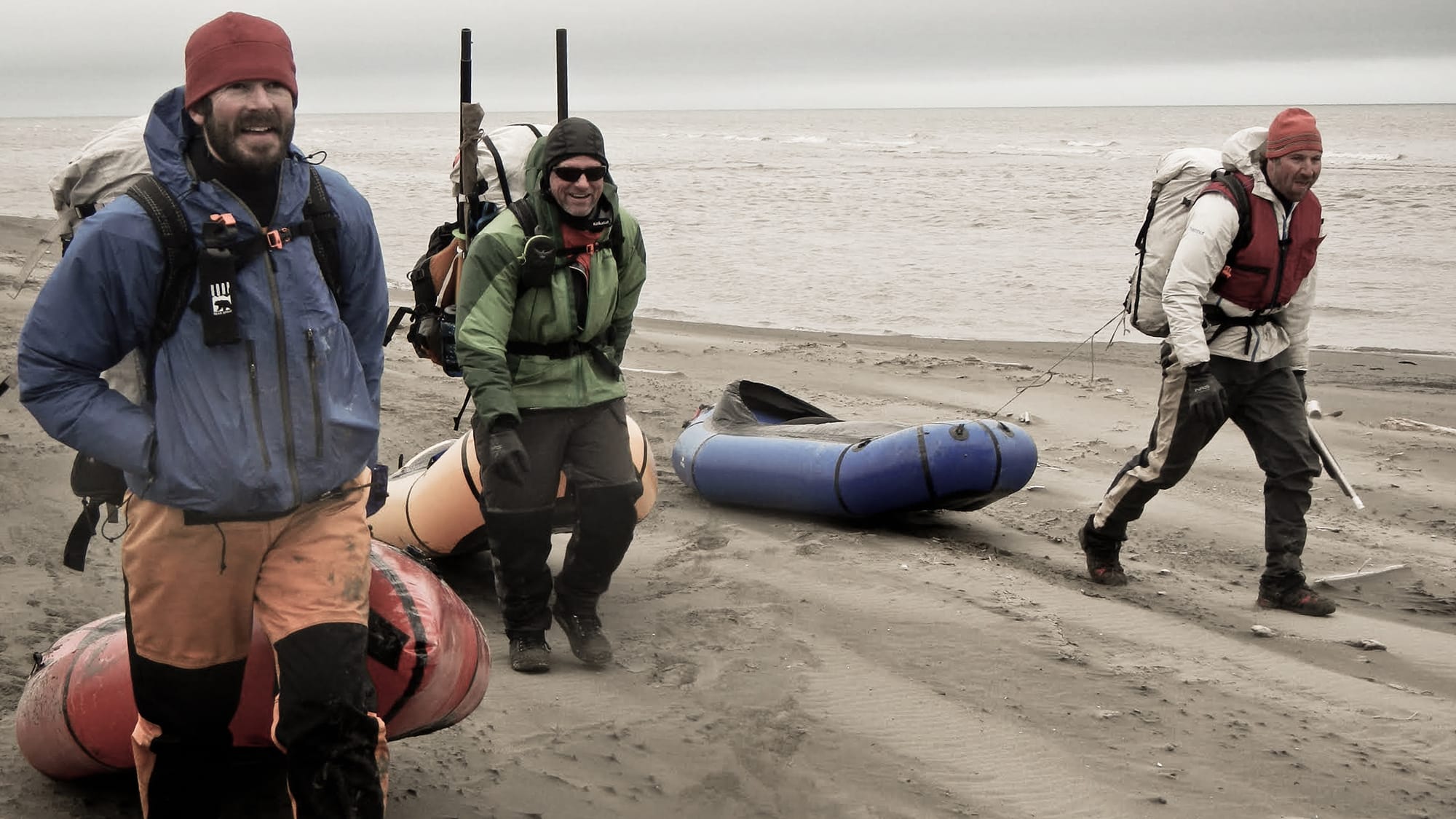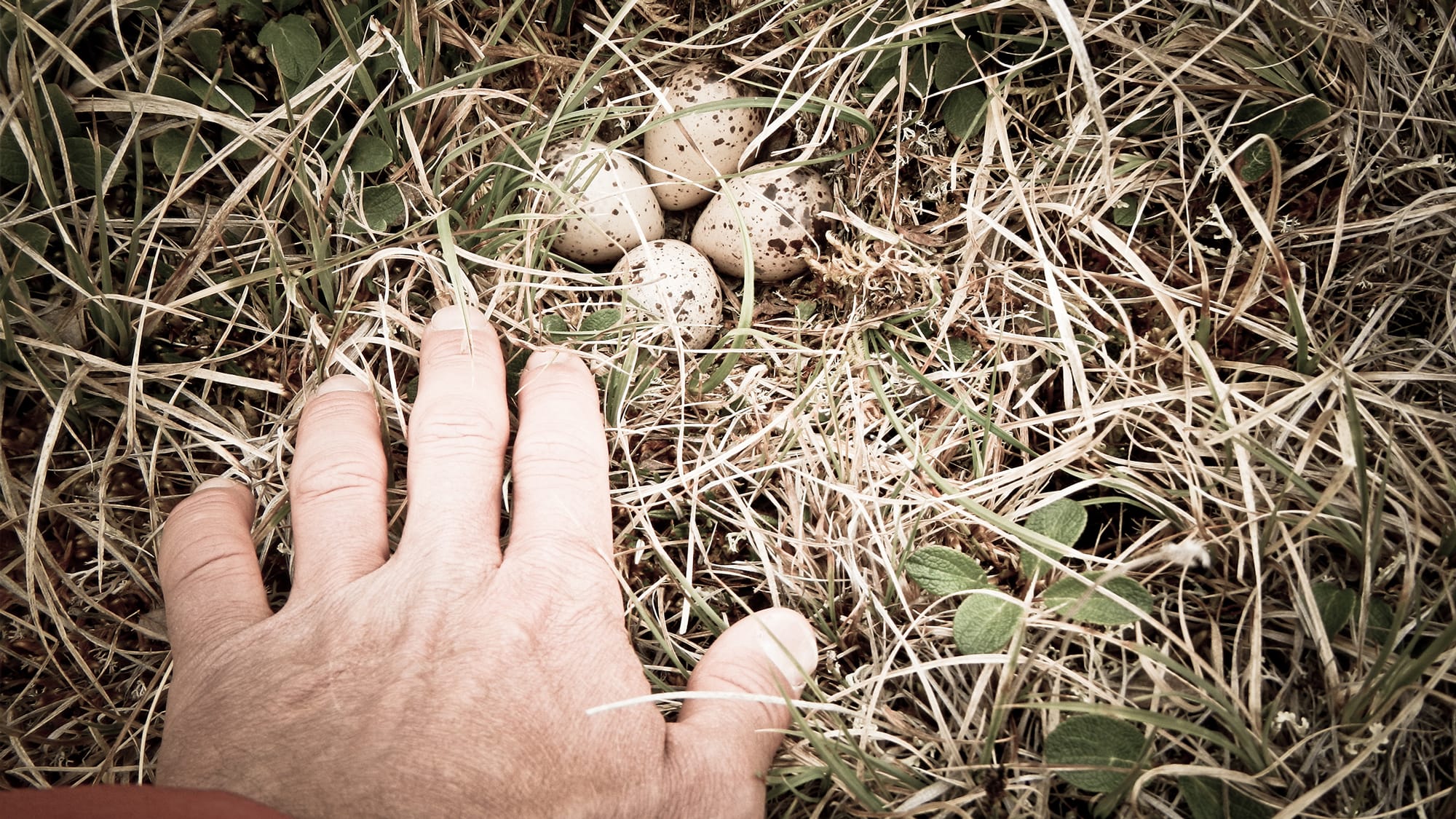Leave No Trace Principles in Alaska’s Arctic Wildlife Refuge
Words & Photos by Don Carpenter
The Arctic National Wildlife Refuge in northeastern Alaska is a special place. A large and diverse ecosystem of rivers and spruce forests exists on the south side of the Brooks Range, while glaciated peaks lie in the heart of the range, and the coastal plain expands to the north, with rivers draining into the Arctic Ocean.
On my first ski expedition to the high peaks of the Arctic Wildlife Refuge in 2014, my eyes were constantly drawn north. In that direction, the glaciated peaks of the Brooks Range transition to the open coastal plain and the Arctic Ocean beyond. I knew I wanted to go there someday.
Just over a year later, I found myself walking across the Refuge’s coastal plain, en route from the south side of the Brooks Range to Beaufort Sea. My three partners and I were traveling by packraft and foot, linking four rivers over 12 days. Our goal was to explore a vast, pristine landscape, while minimizing our impact by following the 7 Leave No Trace (LNT) principles.
1. Plan Ahead and Prepare
2. Travel and Camp on Durable Surfaces
3. Dispose of Waste Properly
4. Leave What You Find
5. Minimize Campfire Impacts
6. Respect Wildlife
7. Be Considerate of Other Visitors
Our team practiced all seven of the LNT principles on our trip, but thought our experiences with numbers 1, 5 and 6 would be worth sharing given the unique landscape and challenges that the Arctic Refuge presents.

#1: Plan Ahead and Prepare
You can’t take care of the environment around you if you aren’t prepared to take care of yourself. Expedition planning is an art form balancing safety, efficiency and pack weight. We wanted our packs to be light, but erred a bit heavier with a few items due to remoteness and anticipated weather. In an environment such as the Arctic in August, where winter conditions may not be far off, going light is a relative concept.

After a several hour flight on a bush plane, we needed to be self-sufficient and able to deal with broken gear or a myriad of potential injuries or illnesses. We took the time to plan our route, calculating mileage, elevation gain and loss, as well as features to look for when we transitioned from paddling to hiking and vice versa.

We considered worst-case scenarios regarding injuries and animal encounters and brought appropriate emergency gear for this specific trip, including a satellite phone, a shotgun, flares and bear spray, along with first aid and repair supplies. During our planning, we calculated food and fuel consumption for this specific trip. The amount of food and fuel one brings on an expedition varies based on weather, travel distance and activity level. We rationed 1.75 pounds of food per person per day, which we supplemented with Arctic Char. We budgeted 1/3 of a liter of fuel per day, which we extended with driftwood fires.

Our personal gear needed to handle a wide range of possible temperatures. We encountered cold, wet conditions. We wanted enough layers to keep us safe, but not too many that our packs were excessively heavy. Most paddling days found me wearing all of my layers underneath my drysuit and working hard to stay warm during short breaks out of the boat. I wouldn’t change what I brought in regards to layers, as we counted on our tent and sleeping bags as a backup. If one of us got wet, or needed another layer, we could always set up camp and get in sleeping bags.

I think we nailed the balance of going light and being prepared for a remote, cold, wet trip. We all had enough warm clothes, without much to spare. Our food was sufficient, but we were grateful for the Arctic Char that Scott and Greg caught to add to a few of our dinners. Ample driftwood and LNT fires allowed us to have plenty of hot drinks after cold paddling days. We wouldn’t have struck this balance without proper planning.
#5: Minimize Campfire Impact
Cooking on fires allowed us to cut our fuel ration. It is also one of my favorite parts of Alaskan river travel. But, a charred fire ring can last for years and make it obvious that people have been there. To minimize the impact of our fires, we were careful to build small fires on the sandy soil of the river bar. When we were done cooking, we made sure to burn all of the firewood to ash. We dumped the cooled ash and thin layer of charred sand into the river, leaving behind no evidence of our campfire.
Thoughts from our 2017 trip through the Refuge: Even in such remote country we did see some human impacts this year, such as trash/toilet paper/old fire rings left behind. I think it is easy to think that in such a faraway place one can get away with poor LNT principles. But, this terrain tends to funnel people to travel and camp in similar spots, thus the impacts of poor LNT can be concentrated.

#6: Respect Wildlife
The Arctic coast is known for brown and polar bears. We were excited to see bears, but wanted to avoid a close bear encounter, as it could be bad for us and/or the bear. Traveling in a group of four gave us a margin of safety with keeping bears at a distance. We were diligent about keeping our kitchen and camp separate and stored our food in bear proof Ursacks far away from our tent. We made noise as we traveled, becoming more vocal in brushy areas. Our boat pickup on the coast minimized our time where a polar bear encounter was likely. Avoidance is the best policy in terms of close bear encounters, but pepper spray, flares and shotgun were our backup.

Don Carpenter is a guide, outdoor educator, and co-owner of the American Avalanche Institute. He has been guiding and teaching in the mountains since 1998 and an owner and instructor at the AAI since 2009. His winters are busy with logistics and avalanche courses at AAI and ski guiding. Spring, summer, and fall find him guiding, running rivers, packrafting, and chasing elk. Don, and his wife Sarah, live in a straw-bale home they built on the western slope of the Tetons.
The post Leave No Trace Principles in Alaska’s Arctic Wildlife Refuge appeared first on Hyperlite Mountain Gear Blog.